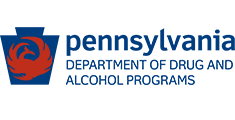The signs, symptoms, and effects of OxyContin addiction can be different for every person impacted. Learning about OxyContin addiction is one of the first steps towards getting better.
Understanding OxyContin
Learn about OxyContin and substance abuse
OxyContin is a powerful prescription medication used to alleviate moderate to severe pain. As a narcotic opioid, OxyContin, which is the trade name for the generic drug oxycodone, is a Schedule II controlled substance due to the high risk it poses for abuse and addiction. While this drug can successfully alleviate the distress that individuals feel as a result of moderate, severe, or chronic pain, its consumption also produces pleasurable effects that lead many to take it for nonmedical purposes. Euphoria, relaxation, and a general sense of wellbeing have all been cited as effects of OxyContin and are often what cause individuals to regularly return to using the drug. However, the continuous consumption of this substance, or consuming more than one’s physician has prescribed, can ultimately lead to physical and psychological dependence and addiction. Once an opioid use disorder of this nature has developed, it can be extremely difficult for individuals to break free from. For this reason, seeking comprehensive treatment that helps individuals learn how to fight against their compulsion to use OxyContin is imperative.
Statistics
OxyContin addiction statistics
The abuse of opioid medications, including OxyContin, continues to be a widespread problem throughout the world. The National Institute on Drug Abuse (NIDA) reports that an estimated 2.1 million people in the United States alone abuse prescription opioid medications. Worldwide, estimates show that between 26.4 and 36 million people use some form of prescription opioids, including OxyContin, for recreational purposes.
Causes and Risk Factors
Causes and risk factors for OxyContin addiction
The causes and risk factors that can impact the development of an addiction to OxyContin are discussed briefly in the following:
Genetic: According to the American Psychiatric Association (APA), genetic factors play an important role in the development of an opioid use disorder like OxyContin use disorder. When there exists a family history of OxyContin or other opioid abuse, individuals are more susceptible to struggling with similar concerns than are those who do not have the same type of genetic background. Furthermore, possessing certain types of temperaments, such as impulsivity, can be risk factors for OxyContin abuse, and such temperaments may be genetically determined.
Environmental: Social, family, and peer environmental factors can all play a role in the development of an addiction to OxyContin. The environments in which individuals are immersed can have a monumental influence on the decisions that they make. If people are surrounded by peers or family members who abuse substances, such as OxyContin, then they are at a heightened risk for engaging in similar behaviors. Additionally, if individuals are in environments where their ability to obtain drugs like OxyContin is easy, they, too, have a heightened vulnerability for beginning to abuse the substance.
Risk Factors:
- Family history of substance abuse and addiction
- Personal history of suffering from childhood conduct disorder
- Suffering from a medical condition, experiencing a physical accident, or undergoing surgery or other type of medical procedure that warrants the prescribing of OxyContin
- Having a novelty-seeking personality or an impulsive temperament
- Being exposed to alcohol and/or drug abuse, including OxyContin abuse, by friends or family members
- Being in a profession where access to medications like OxyContin is readily available, such as the medical profession
Signs and Symptoms
Signs and symptoms of OxyContin addiction
The signs and symptoms of OxyContin abuse will inevitably vary from person to person, but may include the following:
Behavioral symptoms:
- Taking OxyContin in larger amounts or over longer periods of time than intended
- Continuing to consume OxyContin despite having the desire to stop doing so
- No longer fulfilling obligations at work
- No longer adhering to responsibilities at home
- Using OxyContin in situations that could be hazardous, such as while driving
- Spending a great deal of time obtaining, using, or recovering from the use of OxyContin
- No longer participating in activities that were once enjoyed
- Withdrawing from friends and family members
- Visiting multiple physicians in order to obtain multiple prescriptions for the drug
- Slurred speech
Physical symptoms:
- Constricted pupils
- Drowsiness
- Psychomotor agitation
- Psychomotor retardation
Cognitive symptoms:
- Experiencing strong cravings to use OxyContin
- Impaired judgment
- Memory impairment
- Attention and concentration difficulties
- Suicidal ideation
Psychosocial symptoms:
- Feeling in a constant state of unease (dysphoria)
- Euphoria
- Apathy
- No longer finding interest in things that one was once interested in
Effects
Effects of OxyContin addiction
The abuse of OxyContin can produce any number of unfavorable effects in an individual’s life. Examples of such effects may include, but are not limited to, the following:
- Visual disturbances
- Damage to vital organs
- Injured veins / track marks among those who inject the drug
- Dry mouth
- Increased risk for contracting infections like hepatitis C and HIV/AIDS
- Financial instability
- Occupational failure
- Homelessness
- Disturbed social relationships
- Onset of family strife
- Marital discord / divorce
- Suffering from suicidal ideation
- Engaging in self-harming behaviors
- Making attempts at suicide
- Legal problems
- Death from suicide or overdose
Co-Occurring Disorders
OxyContin addiction and co-occurring disorders
It is not uncommon for individuals who are battling an addiction to opioids like OxyContin to simultaneously suffer from symptoms of other mental health conditions. Examples of such conditions can include:
- Stimulant use disorder
- Alcohol use disorder
- Other substance use disorders
- Persistent depressive disorder
- Major depressive disorder
- Posttraumatic stress disorder (PTSD)
Withdrawal and Overdose
Effects of OxyContin withdrawal and overdose
Effects of OxyContin withdrawal: When the chronic use of OxyContin is abruptly ceased or drastically reduced, individuals are at risk for undergoing an uncomfortable period of withdrawal as their bodies readjust to the lack of the drug’s presence. During this withdrawal period, people frequently find that they experience significant interruption of their ability to function appropriately. The symptoms and effects of OxyContin withdrawal may include, but are not limited to, the following:
- Dysphoric mood
- Insomnia
- Pupil dilation
- Sweating
- Fever
- Nausea
- Diarrhea
- Vomiting
- Aching muscles
Effects of OxyContin overdose: Any time that an individual ingests more of a substance than his or her body is capable of metabolizing, he or she is at risk for experiencing an overdose. As individuals continue to abuse OxyContin, they begin to develop dependence on the drug. When this happens, they have to continuously increase the amount that they use, or increase the frequency with which they use, in order to achieve the pleasurable effects that they desire. In doing so, they are putting themselves at risk for consuming more than their bodies can handle. Should an OxyContin overdose occur, emergency medical attention should be sought immediately so as to prevent a grave outcome. Examples of signs that could indicate that someone has overdosed on OxyContin may include:
- Cold, clammy skin
- Seizures
- Headache
- Highly slurred speech
- Confusion
- Dizziness
- Shallowed or labored breathing
- Profuse sweating
- Sudden sleepiness







